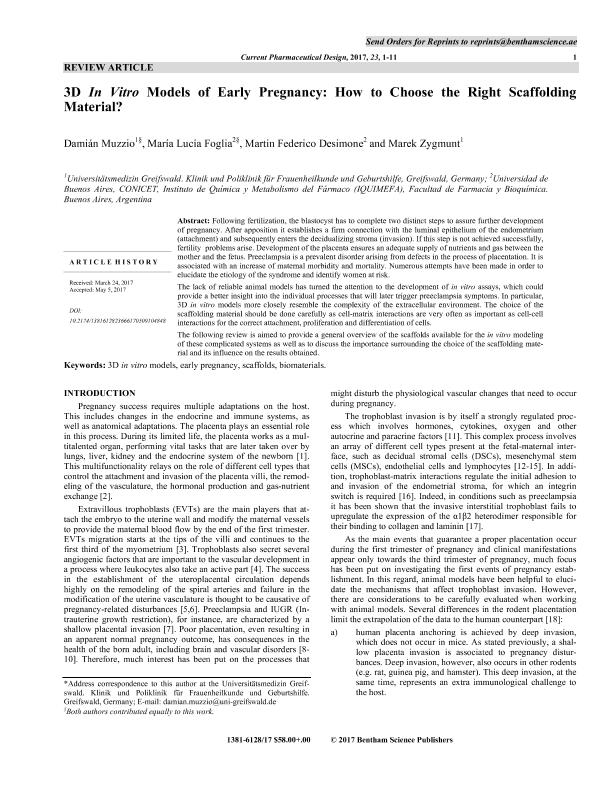Artículo
3D in vitro models of early pregnancy: How to choose the right scaffolding material?
Fecha de publicación:
07/2017
Editorial:
Bentham Science Publishers
Revista:
Current Pharmaceutical Design
ISSN:
1381-6128
Idioma:
Inglés
Tipo de recurso:
Artículo publicado
Clasificación temática:
Resumen
Following fertilization, the blastocyst has to complete two distinct steps to assure further development of pregnancy. After apposition it establishes a firm connection with the luminal epithelium of the endometrium (attachment) and subsequently enters the decidualizing stroma (invasion). If this step is not achieved successfully, fertility problems arise. Development of the placenta ensures an adequate supply of nutrients and gas between the mother and the fetus. Preeclampsia is a prevalent disorder arising from defects in the process of placentation. It is associated with an increase of maternal morbidity and mortality. Numerous attempts have been made in order to elucidate the etiology of the syndrome and identify women at risk. The lack of reliable animal models has turned the attention to the development of in vitro assays, which could provide a better insight into the individual processes that will later trigger preeclampsia symptoms. In particular, 3D in vitro models more closely resemble the complexity of the extracellular environment. The choice of the scaffolding material should be done carefully as cell-matrix interactions are very often as important as cell-cell interactions for the correct attachment, proliferation and differentiation of cells. The following review is aimed to provide a general overview of the scaffolds available for the in vitro modeling of these complicated systems as well as to discuss the importance surrounding the choice of the scaffolding material and its influence on the results obtained.
Archivos asociados
Licencia
Identificadores
Colecciones
Articulos(IQUIMEFA)
Articulos de INST.QUIMICA Y METABOLISMO DEL FARMACO (I)
Articulos de INST.QUIMICA Y METABOLISMO DEL FARMACO (I)
Citación
Muzzio, Damián; Foglia, María Lucía; Desimone, Martín Federico; Zygmunt, Marek; 3D in vitro models of early pregnancy: How to choose the right scaffolding material?; Bentham Science Publishers; Current Pharmaceutical Design; 23; 24; 7-2017; 3603-3613
Compartir
Altmétricas




